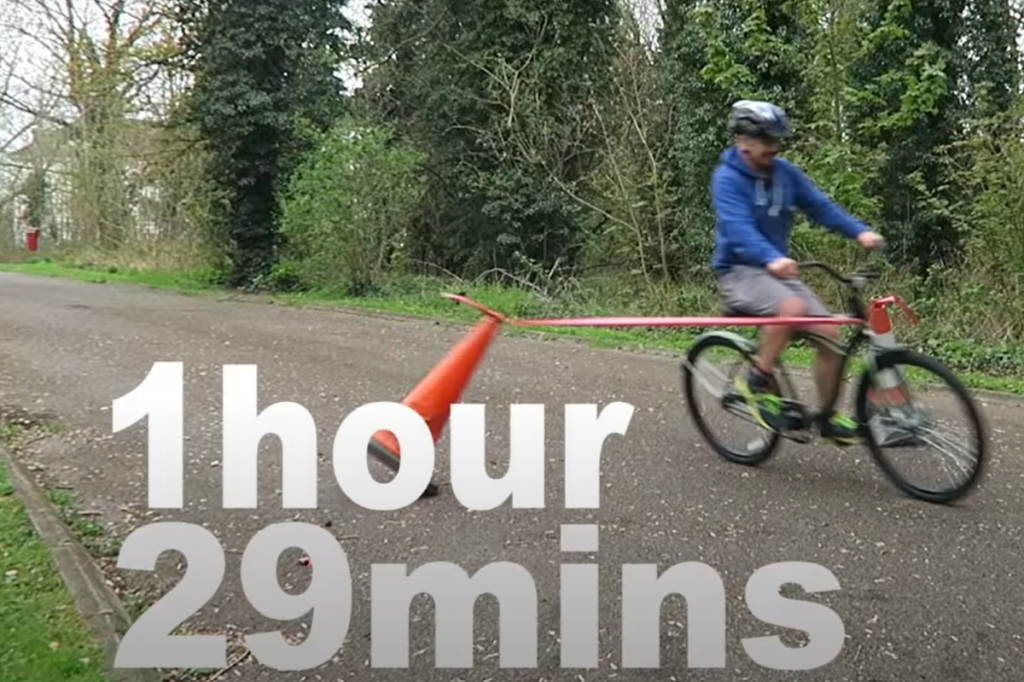For this blog post, I’m going to explore the video of Destin from Smarter-Everyday in his journey to ride the backwards brain-bike (BBB). This video is an excellent insight into neuroplasticity which I define as the context of mind in which we are able to best learn new information and make new connections.

After watching Destin’s attempt on the BBB, I watched a follow-up video where Destin challenged another Youtube creator named Mike Boyd to attempt to learn to ride the BBB. Boyd’s Youtube channel centers around his undertakings to learn new hands-on skills. Boyd has successfully learned many skills from unicycling, to juggling, to spinning a basketball on the tip of his finger! Sure enough, Boyd was able to learn how to ride the BBB in 1 hour and 29 minutes whereas It took Destin 8 months (on-and-off) to learn to ride the bike.
We could say that Boyd is trained in learning new skills; he can curate neuroplastic mindsets for learning. When we are young, our minds are less habitualized to functioning in a certain way, and this is a reason that we can pick up new languages quickly. On the other hand, when we are young, we have not developed the skills to know how to teach ourselves, so much of our learning is dependent on the resources given to us from the outside environment. As people begin to know themselves, they can understand the particular methods that are effective to optimize their own learning.

The book “thinking fast and slow” by Daniel Kahneman talks about “system 1” and “system 2” as two different parts of our learning systems in our minds. System 1 is the part of the brain that automatically responds in the way it thinks is right whereas system 2 is the part of the brain that uses critical analysis to make decisions. In simple, learning must take place through system 2 and then once a skill is learnt, it can automatically be used through the system 1. In a video called “The Science Of Thinking”, Veratasium says that “For most of us, thinking is unpleasant, we try to avoid it when possible”.We are all familiar with the frustration involved with learning a new topic. A lot of the time it is easier to ‘pretend we know’ exactly what we are learning so that we don’t actually need to learn.
Till next time,
Sam.
Hi Sam. Great blog post! I really enjoyed how you incorporated different sources and explored more related to the backwards bike. I also found the bike video very interesting, its crazy that Mike was able to learn how to ride the backwards bike so quickly. I also found it informative that you expanded on why learning can be so frustrating some times.
Thank you for sharing! What a great example of how learning works! How would you explain this learning process from the perspective of learning theories? In particular, what learning theory, e.g., behaviourism, cognitivism, and/or constructivism, helps achieve the desired outcome – ride the bike? What specific strategies (based on the learning theory) did both folks use? Yes, metacognitive awareness -knowing how we personally learn- is essential. It allows us to control our own learning and adjust strategies based on changes in our comprehension, which can speed up the learning process.
Great blog post, Sam! I’m happy you chose to write it on this video because I also found this experiment particularly interesting. The video was also incredibly entertaining. I’ve always heard people tell me that kids are able to learn language much easier than adults. And this video explained “why” very efficiently. Your blog post made the concept of neuroplasiticy even more clear. Although, it does make me a bit sad that my brain is stiffening as I grow up. I may have to learn some more languages while I can! Or…maybe how to ride a bike backwards. Wait no, cause then I wont be able to ride a normal bike anymore! It found it even more interesting that his mind had replaced the skill of riding a bicycle, instead of simply creating an additional skill set. It’s crazy that we would “replace” these skill sets. I am curious if this would have the same effect on his child?